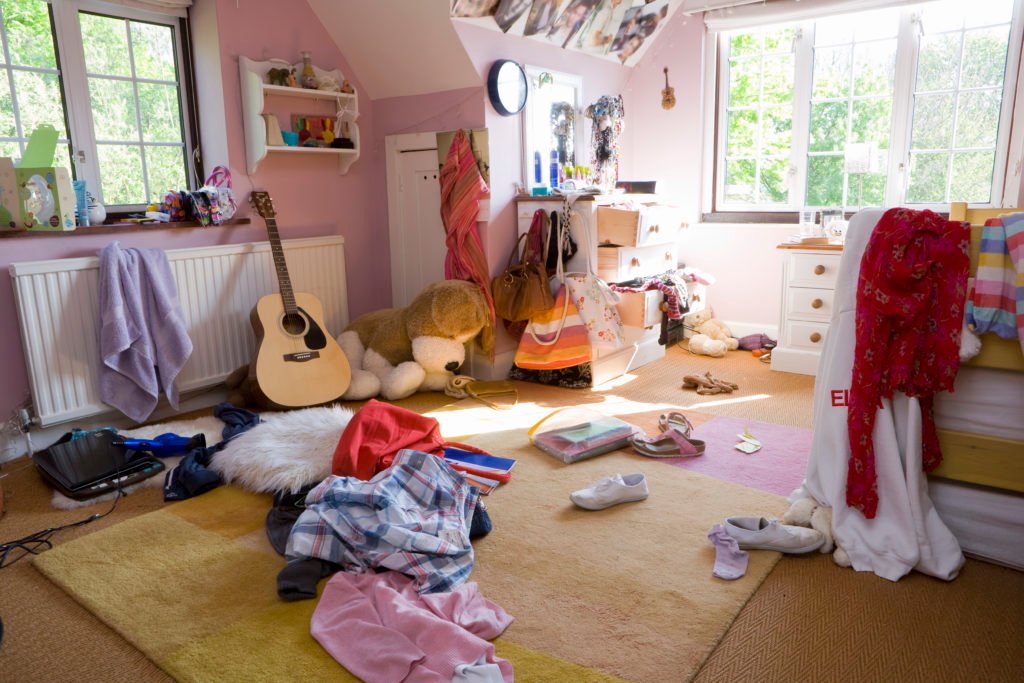How to Tackle Your Household Clutter More Efficiently
Household clutter can quickly overwhelm your living space, making it difficult to relax or stay organized. We understand that the process of decluttering may seem daunting, but with the right approach and strategies, you can reclaim your home and maintain a clutter-free environment. This comprehensive guide will walk you through proven methods to tackle clutter, organize your home, and keep it that way for the long term.
1. Assess the Clutter Situation
Before diving into decluttering, it’s essential to understand the extent of the clutter in your home. Take a walk through each room and assess the areas that need the most attention. Make notes of where clutter accumulates the most and identify the items that contribute to the chaos.
Identify Problem Areas
Pay close attention to spaces like:
- Entryways: Often the first area to collect shoes, bags, and other items.
- Kitchen Counters: A common spot for mail, gadgets, and miscellaneous objects.
- Living Rooms: Books, magazines, remotes, and toys can pile up here.
- Bedrooms: Clothes, shoes, and personal belongings can clutter the space.
Once you identify the problem areas, it becomes easier to create a strategy for decluttering.
2. Set Clear Goals and Prioritize
Clutter didn’t build up overnight, and it won’t disappear overnight either. We recommend setting clear decluttering goals to avoid feeling overwhelmed. Break the process down into smaller, manageable tasks and prioritize areas that impact your daily life the most.
Create a Decluttering Plan
- Start Small: Focus on one room or area at a time. For instance, declutter your kitchen countertops before moving on to cabinets.
- Set Time Limits: Allocate a specific amount of time each day for decluttering—whether it’s 20 minutes or an hour.
- Set Donation or Disposal Goals: Commit to getting rid of a certain number of items each day or week, either through donation or disposal.
By setting realistic goals, you’ll stay motivated and avoid burnout during the decluttering process.
3. Sort Items by Categories
An effective method to tackle clutter is to sort items by categories rather than location. This ensures you know exactly how much of a particular item you own, helping you decide what to keep and what to discard.
The Four-Box Method
To make this easier, we suggest using the Four-Box Method:
- Keep: Items you need, use regularly, or have sentimental value.
- Donate: Items in good condition that someone else could benefit from.
- Trash: Broken or unusable items that need to be discarded.
- Relocate: Items that belong in a different room or area of the house.
This method provides a clear, actionable process for tackling clutter, ensuring nothing is overlooked.
4. Implement Storage Solutions
Once you’ve sorted through your belongings, it’s time to invest in efficient storage solutions. Proper storage will help maintain order and prevent clutter from returning.
Optimize Your Storage Space
- Shelving: Install shelves to make use of vertical space, especially in closets, garages, and pantries.
- Storage Bins: Use labeled bins or baskets to store smaller items like accessories, toys, or cleaning supplies.
- Furniture with Built-In Storage: Opt for furniture pieces like ottomans, benches, or beds with hidden compartments to maximize space.
By using the right storage solutions, you can keep items neatly organized and easily accessible.
5. Let Go of Sentimental Items
One of the most challenging aspects of decluttering is parting with sentimental items. However, it’s crucial to remember that while memories are important, holding onto too many items can contribute to the clutter in your home.
How to Handle Sentimental Clutter
- Limit Keepsakes: Keep only a few meaningful items that bring you joy. You don’t need to keep every card, gift, or memento to remember a loved one or event.
- Digitize Memories: Consider taking photos of items you no longer have room for. This allows you to preserve the memory without the physical clutter.
- Create a Memory Box: Designate a small box or container for the sentimental items you cherish the most.
By learning to let go of some sentimental items, you’ll make room for new experiences and a clutter-free living space.
6. Establish Daily Habits to Maintain Order
After decluttering, the next step is to maintain your newly organized home. Establish daily habits that help keep clutter at bay and prevent it from building up again.
Key Habits for a Clutter-Free Home
- One In, One Out Rule: For every new item that enters your home, remove one item. This prevents the accumulation of unnecessary belongings.
- Daily Clean-Up: Spend 10-15 minutes each day tidying up and putting things back in their designated places.
- Handle Mail Immediately: Sort through mail as soon as you receive it—file important documents and discard junk mail right away.
By incorporating these habits into your daily routine, you’ll ensure your home stays clutter-free over the long term.
7. Tackle Paper Clutter
Paper clutter is a significant contributor to household disorganization. From bills and receipts to magazines and school papers, it’s easy for paper to pile up. We recommend setting up a system to control paper clutter effectively.
Organize Important Documents
- Create a Filing System: Invest in a filing cabinet or a portable file box to organize important documents such as bills, tax records, and insurance papers.
- Go Paperless: Opt for digital versions of bills, bank statements, and other documents whenever possible.
- Shred Unnecessary Papers: Dispose of outdated or irrelevant documents immediately by shredding them.
A streamlined paper organization system will reduce stress and keep your home more organized.
8. Involve the Whole Household
Decluttering shouldn’t fall on one person’s shoulders. It’s important to involve everyone in the household in the process to ensure the clutter doesn’t return.
Assign Responsibilities
- Teach Children Organization Skills: Involve your kids in decluttering their toys, clothes, and school supplies. This helps them understand the importance of staying organized.
- Hold Family Clean-Up Sessions: Schedule regular family clean-up sessions where everyone pitches in to keep the home tidy.
- Set a Good Example: When adults in the household model good organizational habits, it encourages everyone to follow suit.
A team effort makes it easier to maintain a clutter-free home and fosters a sense of responsibility for keeping shared spaces organized.
9. Declutter Regularly
Finally, decluttering should be a regular activity. We recommend scheduling seasonal decluttering sessions to ensure that your home stays organized throughout the year.
Seasonal Decluttering Tips
- Spring and Fall Clean-Outs: These are ideal times to assess clothing, decorations, and household items. Donate, sell, or discard anything you didn’t use in the past year.
- Holiday Preparations: Before the holiday season, declutter spaces to make room for decorations and potential new gifts.
- Set Reminders: Use your calendar to schedule decluttering sessions every few months.
With regular decluttering sessions, you’ll prevent clutter from accumulating and keep your home a peaceful, organized space.





